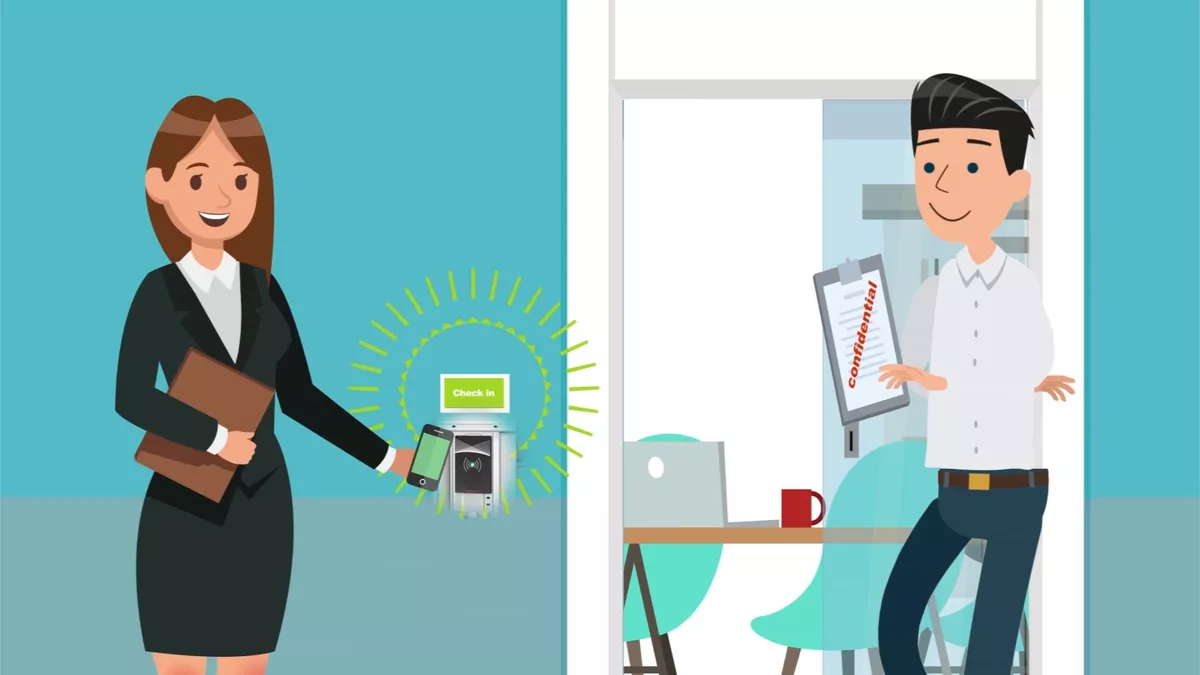Access granted: decision support for choosing the right authentication solution


The doors to the office firmly locked, a frantic search for the bunch of keys with the transponder in every nook and cranny of the bag, then the realization: it's at home on the kitchen table. Does this sound familiar? While keyfobs or ID cards are often forgotten, the smartphone is almost always within reach. That’s one reason why mobile credentials — digital IDs on the smartphone — are becoming increasingly popular in modern access solutions. In this article, we explain when it makes sense to use RFID (Radio Frequency Identification) cards and when it is better to rely on smartphone-based solutions. We also take a brief look at the nature of an ideal reader/writer.
In the area of authentication and access, both RFID and NFC (Near-Field Communication) or BLE (Bluetooth® Low Energy) technologies bring numerous advantages.
- Access: The use of cards, keyfobs and smartphones is fast and uncomplicated, as they can simply be held up to the reader. Password/PIN systems are no longer necessary.
- Security: These technologies are more secure and easier to use than password/PIN systems and more difficult to counterfeit than competing magnetic stripe or optical reader technologies. In addition, users are significantly less likely to pass on a phone or ID card than a password or PIN.
- Identification: RFID cards and smartphone apps can be used to match users with systems or devices. This prevents unauthorized persons from gaining access to sensitive company areas such as the laboratory, for example.
RFID cards or smartphones: which is better?
As a general rule, the solution selected must be tailored to the individual requirements and needs of the company and its employees or user group. For example, if they belong to a population group that is less likely to own a smartphone, such as residents of a retirement home, companies and institutions should use RFID cards. In addition, their use is recommended when employees are often in work environments that make carrying a smartphone impractical or even dangerous — such as in the production area. The use of cards may also be recommended if ID cards are already in use in the company. These same cards can be used when implementing an access and authentication solution.
A smartphone as an identification medium is the right choice when cards are not yet in use and users prefer to use a digital ID on their cell phones. The best example here is students, for whom a smartphone is an everyday companion. In addition, the digital credentials, so-called mobile credentials, are recommended if IT management wants to do without physical credentials such as cards or keyfobs — for example, because digital credentials are easier to manage.
Card or smartphone: what if both are desired and required in the company? Modern access control systems process both RFID cards and digital badges. Thus, depending on the user, it can be decided individually which solution is the optimal one.
The counterpart is what counts
Whether you’re using a keyfob, RFID card or smartphone, for a secure, uncomplicated and future-proof authentication and access control solution, the right reader/writer is also needed. It must ensure maximum security and flexibility. However, most devices can only read a few card technologies. Moreover, some are developed by card manufacturers in such a way that they can only recognize their own technologies. The solution: the reader/writer must be "universal." ELATEC RFID readers, for example, are capable of handling more than 60 card technologies — including high- and low-frequency RFID as well as NFC and BLE, which are increasingly being used in mobile devices. They are also certified for use in up to 110 countries. This means they can support virtually any card technology used in an enterprise. If required, IT departments can also easily add new technologies via remote updates.
Are you looking for a reliable, cost-efficient, secure and future-proof access and authentication solution? Then contact us; we will be happy to advise you!
THE ELATEC NEWSLETTER Your authentication update
As a frequent reader, you will always be up to date with the latest information on the topic of authentication, know the current trends and receive valuable tips. By signing up to our newsletter, we will make sure you won't miss any new blog articles ever again. And on top, you get even more exciting news on our products, events and industry trends.